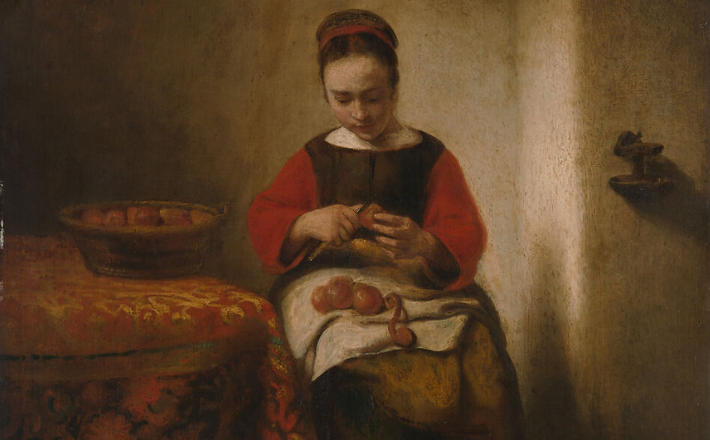Commentary on Colossians 1:15-28
No offense to the developers of the Revised Common Lectionary, but this pericope from the first chapter of Colossians starts and ends in rather awkward places. While the preacher might certainly choose to add or cut verses on either end of the prescribed pericope, I am choosing to stay with the lectionary’s selected verses as I think it might allow us a chance to engage in the intersection of the divine, communal, and personal.
This pericope might best be divided into three sections. Verses 15–20 can be understood as a christological hymn that grows from the declarations of thanksgiving and the intercessory prayer reports that came in the verses prior. The second part, verses 21–23, moves the focus to the application of Christ’s work for God’s people, or the impact on the present community, the church. The third part, verses 24–28, is Paul’s understanding of his role in relation to the community to whom he is writing, but whom he has never met.
The sentences in this section are long—in Greek and in English—and include lots of christological, Jewish apocalyptic, and Hellenistic references. An exegetically enthusiastic preacher could certainly find joy in untangling the web of references and images for Christ found in the hymn or in unwinding Paul’s concern for this community as they are tempted to follow another philosophy. And yet, there is something intriguing about considering these three sections all together as they invite us to sit at the crux of the cosmic, ecclesial, and personal.
The christological hymn offers readers a glimpse into how we might understand Christ’s self and work. Verse 15 begins by claiming that Christ Jesus is the “image of the invisible God.” We are reminded, first and foremost, that in Jesus, God’s enigmatic self was revealed in human, accessible form. But Jesus is not simply some divine avatar or a holy Rosetta Stone. The same Jesus who came to earth, walked among us, and died on the cross is the Jesus who was at the start of creation. The hymn reminds readers that “all things have been created through him and for him” (verse 16c), and within him “the fullness of God was pleased to dwell” (verse 19).
But Christ’s work is not finished in either creation or incarnation. The author of Colossians insists that Christ still seeks to “reconcile to himself all things, whether on earth or in heaven” (verse 20). So, this Lord we worship is both cosmic and close, both creator and reconciler. This hymn uses liturgical and poetic language to remind the readers that they worship a God who has creative power to form and ultimately heal the world, while at the same time choosing to stand among us and reconcile us to himself.
Without skipping a beat, the hymn turns into a plea for the church’s response. Because of what Christ has done on the cross and is doing in the work of reconciliation, the people of God have reason to hope. The author makes clear that the community of Christ sits in this in-between time, where Christ has already begun the work of reconciliation “in his fleshly body through death” (verse 22). But at the same time, the church is summoned to participate in the completion of this work by remaining “securely established and steadfast in the faith, without shifting from the hope promised by the gospel that you heard” (verse 23).
If the first part is a hymn that reminds the reader what God has done and is doing through Jesus—divine agency—the second part invites the faithful’s engagement and response—communal agency.
Finally, Paul turns to the matter of introducing himself. He articulates his personal response to the reconciling power of Christ’s work—to be a minister of the gospel, even suffering for the work “to make the word of God fully known” (verse 25) and to join in “warning everyone and teaching everyone in all wisdom, so that we may present everyone mature in Christ” (verse 28). The commitment of Paul in response to the reconciling and creative work of God in Christ and for the good and upbuilding of the community adds the dimension of personal agency.
And so, the three collide in these 19 verses: God’s work, our shared work, and our personal faith. So often, there seems to be a divide in church conversation (and even proclamation) between our agency versus God’s agency, or communal care versus personal faith. This text invites preachers and faithful readers to consider the intersection of God’s work, our communal response, and our personal faith commitments.
As with the text, the gracious, hope-filled, and reconciling work always begins with God in Christ. But it impacts us—and all of creation—immediately, inviting our gratitude, awareness, and response. And the faith we share as communities empowers individuals to proclaim the gospel in their spaces, places, and ways. Likewise, personal lives of faith feed, sustain, and empower the community. We need not hold these three realities apart.
In a world that so quickly forms binaries—rich or poor, black or white, gay or straight, mine or yours—this text invites us into a theological dance that blends together God’s work, our shared work, and our personal response. Colossians 1:15–28 invites us to ask how our communal life responds to God’s grace and feeds personal relationships with God, even as people’s personal faith supports the efforts of the community and the reconciling work of God.


July 20, 2025